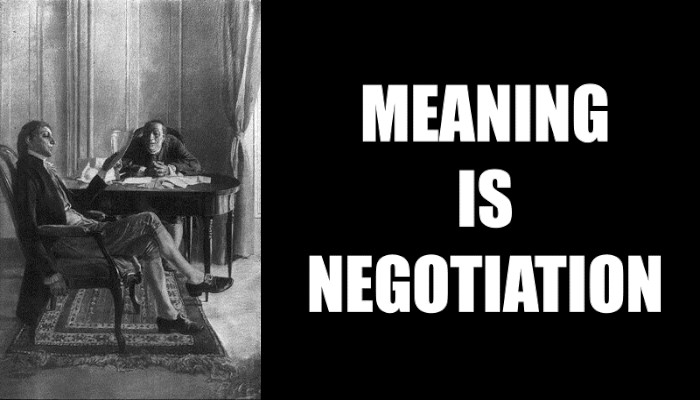
Have you ever stated your case so clearly that you knew with certainty that you nailed it? And while you were celebrating your superior communication achievement, have you ever found yourself standing in front of someone who just didn’t get it…at all? If so, you’ve probably fallen victim to a metaphorical mismatch.
Humans use metaphor–the ability to define one thing in terms of something totally different–to understand complex ideas. Essentially, we build upon the concepts learned through the human condition.
Think about the concept of time. Everyone knows what time is because we experienced it everyday. However, if I pressed you to define it, I bet you’d struggle. Exactly how does one describe something we can’t see, hear, smell, touch, or taste?
That’s where metaphor comes in. Rather than describing time directly, we represent it metaphorically through the various ways it affects our lives. For example, we know that time has:
- Inevitability: There’s nothing that we can do to stop it
- Motion: Time moves from the past, through the present, and into the future
- Direction: We can look back in time to see where we’ve been and forward to predict where we’ll be
- Duration: We’re accustomed to waiting for a process to finish
- Distance: We describe long time durations in terms of distance, such as looking far into the future or way back in the past
- Physical effect: We are born young and small, then grow up to become big and old
- Value: We know that our time is limited, and therefore is a precious commodity. We’re even paid for our time.
Try finding a few of your own.
The concept of time is so deep, it’s highly likely that all metaphorical references won’t be shared among all people. For example, an old person with less time in front of them may disagree with the statement that “There will be plenty of time to do X, Y, or Z.” . Or, no matter how much truth contained in “Don’t worry, things will get better with time,” someone who’s just suffered a tremendous loss won’t react well to the statement.
If your audience doesn’t believe in the metaphorical bricks that you have built your premise upon, your idea will not only be dead on arrival, but your ability to share your concept will suffer a setback. Consider the worldviews of our example old and young people. By definition, the former has more life experience than the latter, yet many of those life experiences don’t align. While the older person has lived through their twenties, they didn’t live through the twenties in this century. Thus, by choosing to communicate using 20th-century metaphors on 21st-century belief systems risks instant slap-backs, as in with the trendy “Okay, Boomer.”
Metaphor is a negotiation because it requires speakers to understand the worldview of their listeners before stating a case. Without understanding your listener’s metaphorical belief structure, it’s easy to step into a hornets nest of misinterpretation.
The conveyance of meaning is fickle because we each interpret information differently. Your goal as a communicator is to find the best metaphor through testing and conversation. If you can find a similar–not necessarily identical–life experience to build your complex concept upon, you’ll have found a successful frame of reference to base your argument.
Photo Credit: Benjamin Franklin and Richard Oswald discussing the Treaty of Peace Paris. , 1898. Photograph. https://www.loc.gov/item/2004674949/.